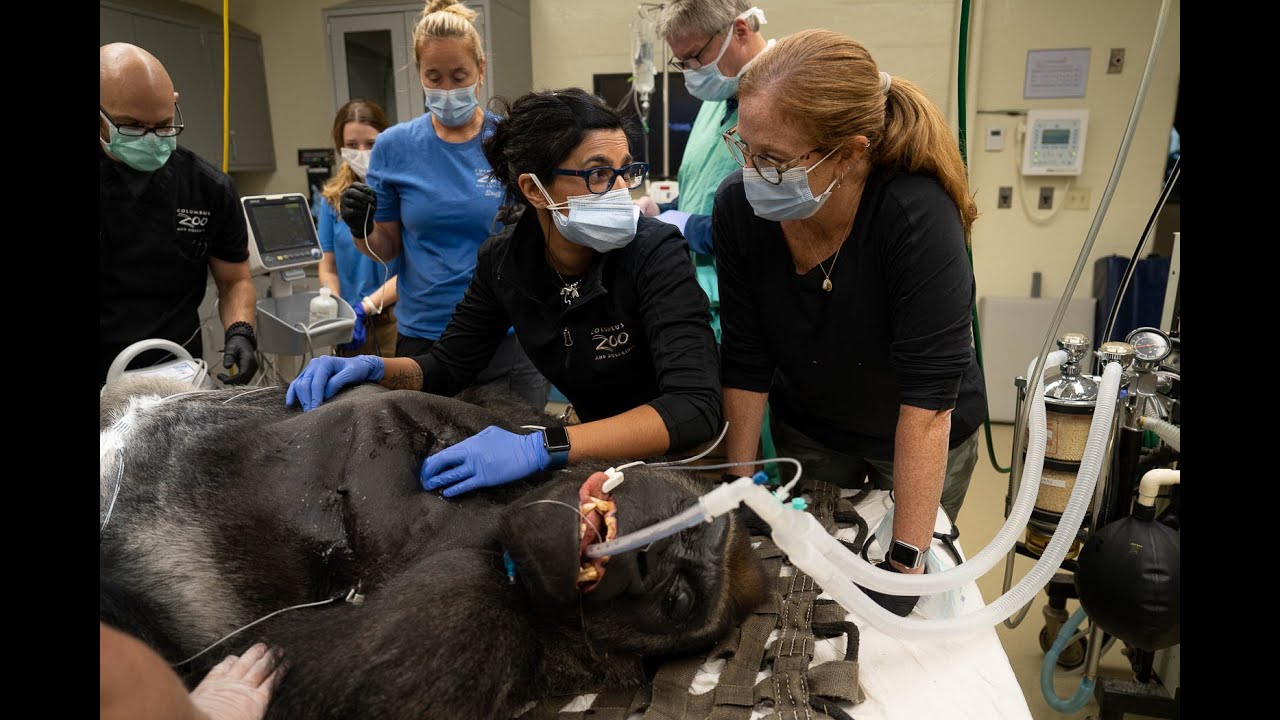Summary:
– In collaboration with several institutions, the Great Ape Heart Project aims to address cardiac disease in great apes at the Columbus Zoo and Aquarium.
– The project recently implanted small cardiac monitors into six great apes to track their heart activity and detect irregularities in real time.
– The monitors will alert veterinarians of abnormalities, allowing prompt treatment and care for the apes.
– The project is an excellent example of collaborative efforts and advancements in animal healthcare.
Have you ever wondered about the complex and intelligent species that are great apes? These incredible creatures, including orangutans, bonobos, and gorillas, are mesmerizing to observe and face specific health threats, with cardiac disease being one of the major concerns. Luckily, institutions like the Columbus Zoo and Aquarium are taking significant steps to address this issue through the groundbreaking Great Ape Heart Project.
In collaboration with the Detroit Zoo, OhioHealth Riverside Methodist Hospital, The Ohio State University College of Veterinary Medicine, and Medtronic, the Animal Health team at the Columbus Zoo, they have recently embarked on an awe-inspiring endeavor. The team anesthetized six great apes with varying degrees of heart disease by implanting small cardiac monitors into their chests. These monitors, roughly one-third the size of a AAA battery, will track the apes’ heart activity in real-time.
Now, you may be wondering, why implant these devices into the apes? Well, here’s where things get fascinating. The cardiac monitors help detect irregular heartbeats, a telltale sign of potential cardiac issues and immediately alert the skilled veterinarians at the Columbus Zoo. This means that the minute any abnormality is detected, the apes can be promptly treated with appropriate medications or undergo other necessary procedures for their well-being.
Let’s meet the apes involved in this extraordinary project. We have two male bonobos, Jimmy, aged 42 and Maiko, aged 38, both displaying some form of heart disease. Additionally, there are two orangutans, Dumplin, a 48-year-old female, and Sulango, a 29-year-old male, with cardiac concerns. Lastly, there are two silverback gorillas, Mac, aged 38 and Ktembe, aged 25, whose hearts are also being monitored. Each of these great apes plays a vital role in unraveling their species’ cardiac health mysteries.
This incredible project highlights the expertise and collaboration between institutions and showcases the advancements in animal healthcare. With the help of cutting-edge technology, the Columbus Zoo veterinarians now have real-time access to critical data about the apes’ heart activity. This allows them to proactively monitor their health and intervene at the earliest signs of trouble, ultimately ensuring the well-being of these remarkable creatures.
The beauty of this project lies in the way it brings together different fields and institutions. The successful collaboration between the Columbus Zoo, the Detroit Zoo, OhioHealth Riverside Methodist Hospital, The Ohio State University College of Veterinary Medicine, and Medtronic exemplifies collective efforts to tackle a pressing issue.
The Great Ape Heart Project provides significant insights into excellent ape cardiac health and paves the way for potential advancements in human cardiovascular research. Our shared physiology with great apes and their susceptibility to cardiac diseases make them valuable study subjects. By deepening our understanding of their hearts, we can further comprehend and unravel the intricacies of our cardiovascular health.
Let’s not forget to applaud the hardworking animal healthcare professionals involved in this venture. Their dedication, expertise, and genuine care for these magnificent creatures profoundly impact their lives. Their efforts ensure that the apes receive the best possible care, allowing them to lead healthier and more fulfilling lives.
As we delve deeper into this fantastic project, it is hard not to be inspired by its possibilities. The Great Ape Heart Project showcases what can be achieved when experts from various fields come together with a shared goal. It teaches us the importance of collaboration while reminding us of the necessity to prioritize the well-being of all species that share this planet with us.
In conclusion, the Great Ape Heart Project at the Columbus Zoo and Aquarium is a testament to the incredible advancements in animal healthcare and the power of collaboration. The project aims to track their heart activity in real-time, detect irregularities, and provide prompt treatment by implanting small cardiac monitors into six great apes. This remarkable endeavor benefits the health of these complex and intelligent species and offers insights into human cardiovascular health. Let us celebrate the dedication and expertise of those involved and continue to support initiatives that promote the well-being of all creatures on Earth.
*****
Source Description
Great apes are complex, intelligent species. The Columbus Zoo and Aquarium is home to orangutans, bonobos, and gorillas; one of the significant health threats they face is cardiac disease. Recently, our Animal Health team–in collaboration with the Great Ape Heart Project, Detroit Zoo, OhioHealth Riverside Methodist Hospital, The Ohio State University College of Veterinary Medicine, and Medtronic–anesthetized six great apes (all with some degree of heart disease) to implant a small cardiac monitor, a device about one-third the size of a AAA battery, into the apes’ chests. The apes are male bonobos, Jimmy (age 42) and Maiko (age 38); orangutans, Dumplin (female, age 48) and Sulango (male, age 29); and silverback gorillas, Mac (age 38) and Ktembe (age 25). In real-time, the cardiac monitors are now tracking the apes’ heart activity for signs of irregular heartbeats. They will alert Columbus Zoo veterinarians of abnormalities so the apes can be treated with medications or other procedures. Watch the video to learn more about this remarkable project.


